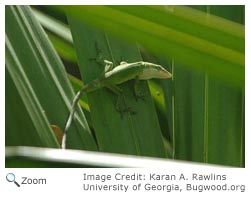Green Anole - Anolis carolinensis |
||||||||
Description It is sometimes call the American chameleon because it can change color, but it is not a true chameleon. The green anole changes color because of changes in temperature, humidity, health and mood, not to blend into its background. Males have a pink or red throat fan or dewlap. Range It has been introduced to Hawaii. Habitat
| Diet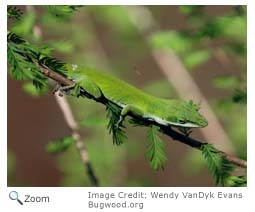 The green anole eats spiders, flies, crickets, small beetles, moths, butterflies, small slugs, worms, ants and termites. It only notices prey that is moving. It gets most of its water from the dew on plants. The green anole eats spiders, flies, crickets, small beetles, moths, butterflies, small slugs, worms, ants and termites. It only notices prey that is moving. It gets most of its water from the dew on plants.
Life Cycle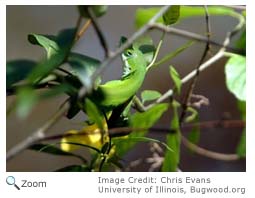 The green anole breeds from March to September. The male will establish a territory and patrol it. He will attract females by puffing out his dewlap. He mates with females in his area and aggressively defends his territory from other males. The green anole breeds from March to September. The male will establish a territory and patrol it. He will attract females by puffing out his dewlap. He mates with females in his area and aggressively defends his territory from other males. When a female and male mate, the female stores the sperm. If she doesn't mate with another male, the stored sperm will fertilize her eggs. The female lays a single egg and buries it in moist leaf litter, hollow logs or the soil. She will lay one egg every two weeks during breeding season. She may lay up to 15-18 eggs during the summer. The female does not stay with the egg or care for the young that will hatch in five to seven weeks. Young green anole eat small insects like mealworms, fruit and house flies and termites.
Behavior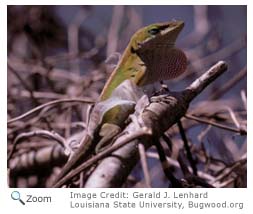 The male anole performs a series of visual displays to establish dominance and territory. To show dominance, it will bob its head up and down, do "pushups" and flare its dewlap. If it is threatened, it will also stretch out its throat, puff out its body, and turn sideways towards the threat. The male anole performs a series of visual displays to establish dominance and territory. To show dominance, it will bob its head up and down, do "pushups" and flare its dewlap. If it is threatened, it will also stretch out its throat, puff out its body, and turn sideways towards the threat.
|
|||||||

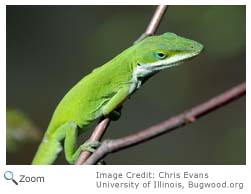
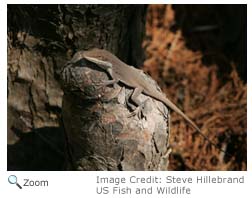
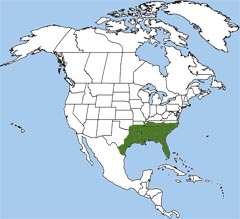 The green anole can be found in the Southeastern United States from southern Virginia to the Florida Keys and west to Central Texas and Oklahoma.
The green anole can be found in the Southeastern United States from southern Virginia to the Florida Keys and west to Central Texas and Oklahoma. 